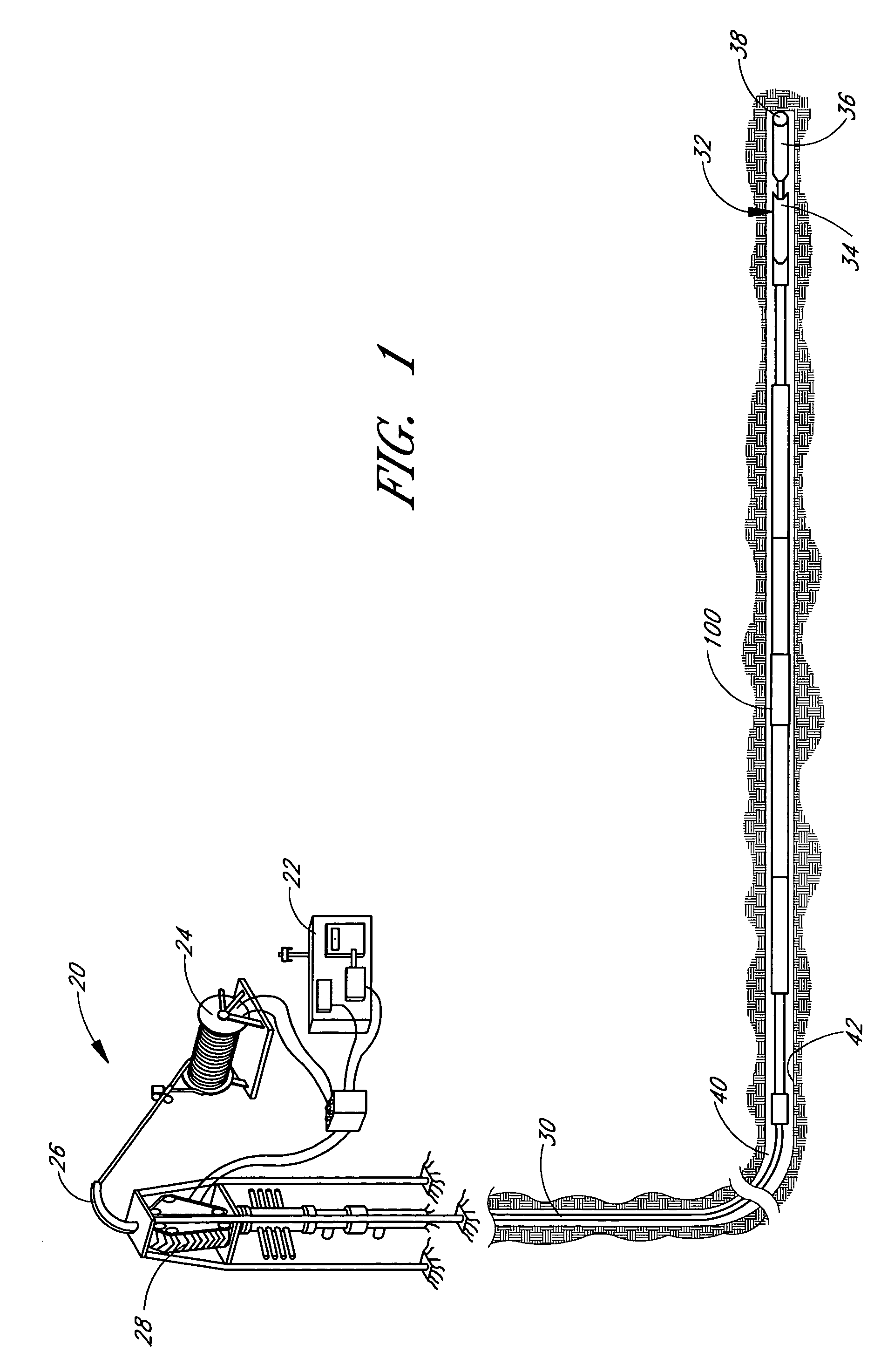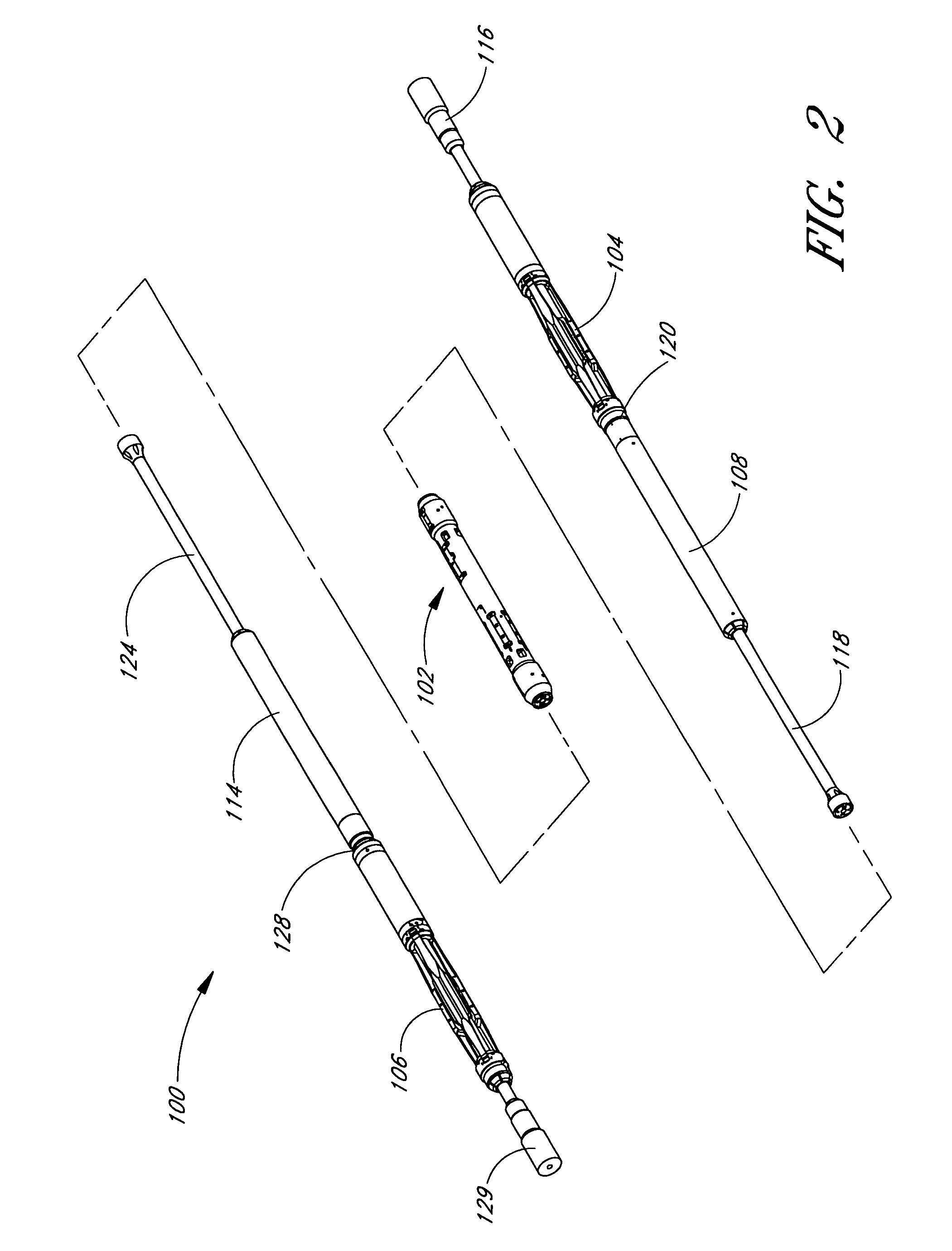Tractor with improved valve system
a valve system and tractor technology, applied in the direction of drilling rods, drilling pipes, borehole/well accessories, etc., can solve the problems of increasing the risk of damage to the gripper assembly, and increasing the time and cost of rotary equipment. , to achieve the effect of reducing the risk of damage to the gripper assembly, and improving the shifting
- Summary
- Abstract
- Description
- Claims
- Application Information
AI Technical Summary
Benefits of technology
Problems solved by technology
Method used
Image
Examples
Embodiment Construction
[0084]FIG. 1 shows a hydraulic tractor 100 for moving equipment within a passage, configured in accordance with a preferred embodiment of the present invention. In the embodiments shown in the accompanying figures, the tractor of the present invention may be used in conjunction with a coiled tubing drilling system 20 and adjoining downhole equipment 32. The system 20 may include a power supply 22, tubing reel 24, tubing guide 26, tubing injector 28, and coiled tubing 30, all of which are well known in the art. The tractor 100 is configured to move within a borehole having an inner surface 42. An annulus 40 is defined by the space between the tractor 100 and the inner surface 42 of the borehole.
[0085]The downhole equipment 32 may include various types of equipment that the tractor 100 is designed to move within the passage. For example, the equipment 32 may comprise a perforation gun assembly, an acidizing assembly, a sandwashing assembly, a bore plug setting assembly, an E-line, a l...
PUM
 Login to View More
Login to View More Abstract
Description
Claims
Application Information
 Login to View More
Login to View More - R&D
- Intellectual Property
- Life Sciences
- Materials
- Tech Scout
- Unparalleled Data Quality
- Higher Quality Content
- 60% Fewer Hallucinations
Browse by: Latest US Patents, China's latest patents, Technical Efficacy Thesaurus, Application Domain, Technology Topic, Popular Technical Reports.
© 2025 PatSnap. All rights reserved.Legal|Privacy policy|Modern Slavery Act Transparency Statement|Sitemap|About US| Contact US: help@patsnap.com



